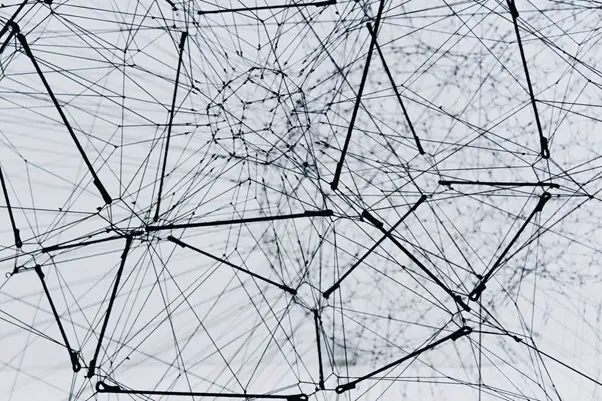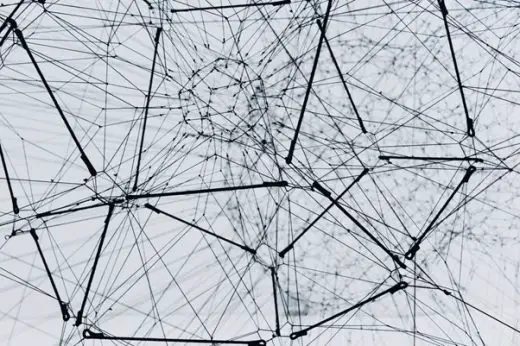Internet of Things in Architecture 2021, Futuristic property utility and trends, IoT building design tips
IoT in Architecture 2021 – Utility and Trends Guide
29 Nov 2021
Suppose you’re already engaged in an IoT (Internet of Things) initiative or are actively thinking about one. In that case, chances are you’re already familiar with some of the IoT solutions, strategies, goals, and desired outcomes. However, you may be new to the notion of IoT architecture.
IoT architecture will have a specific design for your project or a more personalized version of a general framework common for IoT. We’ve decided to present you with an easy guide of the utility and trends of IoT in architecture in 2021, which should help you get a great grasp of the whole idea.
IoT in Architecture 2021 – Utility and Trends Advice Guide
What does IoT represent in architecture?
IoT architecture combines actuators, sensors, cloud services, layers, and various IoT protocols that all compose an IoT networking system. On a more general level, this system is composed of several layers that enable monitoring, maintaining, and evaluating the consistency of this system.
Naturally, it requires a specific strategy as well, with which you can organize the existing systems and infrastructure. Each organization with an IoT architecture is more successful than those without one, with an estimated 34% more chance of increasing revenue through a proper architectural plan.
More successful companies are more likely to stick with an architectural plan that includes both the customized version and a general-purpose outline of the project.
The various components of IoT architecture
Conceptually, IoT architecture is composed of several components: integration, analytics, infrastructure, and security. The analytics component involves processing and displaying all the information we collect with the aid of IoT. Therefore, this component includes AI (artificial intelligence), data analytics tools, visualization capabilities, and ML (machine learning).
The integration component is the one that ensures that all tools, applications, infrastructure, and IoT project security can smoothly integrate with the Enterprise Resource Planning and all other management systems of the organizations.
The security component is all about governing cybersecurity and physical security through firmware and other security providers. Finally, the infrastructure component makes sure that all physical devices (IoT actuators and IoT sensors) for capturing information are a part of this component for environment control.
The infrastructure component is also responsible for transferring data from IoT locations to processing and analysis on designated platforms. Since the sensor and actuator infrastructures are different, the IoT infrastructure also needs an additional management layer.
The four primary stages of IoT architecture in 2021
IoT architecture has four preliminary stages, and we’ve decided to review them one by one. In the process, data flows from the primary sensors to “things” and ends up in a cloud or a corporate data center where it’s stored, analyzed, and processed.
Actuators and sensors
At the first stage of data flow, actuators and sensors and all the connected devices that control and monitor a particular “thing” play the most crucial role. Sensors are responsible for capturing data referring to the process status or any environmental condition like humidity, temperature, fluid levels, chemical composition, the flow in the pipe, etc.
Sometimes, a sensor can detect an event or a condition that needs an immediate response for the actuator to perform remediation actions in real-time, like adjusting a fluid’s flow rate. In such cases, you’ll need low latency between the actuator and the sensor.
If you want to avoid any round-trip data delays, use a SOM (system on module) to carry out this process.
Data acquisition systems and internet gateways
The DAS (Data Acquisition System) is responsible for collecting raw data and converting it from the analog format in the sensors to the digital format. The Data Acquisition System will then aggregate and format all the data before sending it to the internet gateways using a wireless WAN.
After that, the data will go into the next stage of processing. Stage two is all about maximizing the volume of data. Sometimes the quantity can be huge, e.g., a particular factory setting can include hundreds of sensors that gather data simultaneously. Because this is so, we have to compress and filter data which brings us to stage three.
Pre-processing
Once we have all the data in an aggregated and digital form, we have to process it to reduce that data volume before storing it in the cloud. Some analytics can also take place from the edge device in the stage of pre-processing.
Machine learning is beneficial at the third stage of IoT architecture because it can immediately give the system feedback without waiting for the instructions to return from the cloud or the corporate data center. This stage takes place in a location close to the sensors.
Data and cloud center in-depth analysis
At the final stage, IT systems set out to manage and analyze data, after which they store it securely in the cloud. The cloud data from multiple-field sensors or sites are then combined to create a broader picture of the IoT system and provide valuable insights for business managers and IT.
This level of IoT architecture uses company-specific and industry-specific applications to decide on which actions to take. The gathered data may indicate some proposed changes to the process, device settings, and other improvements.
IoT in Architecture 2021 Summary
Final thoughts
Hopefully, now you have a better understanding of what IoT architecture is, what are the primary stages, and what the main components are. Organizations and companies with IoT architecture are far more successful than those who lack one, which is why IoT architecture is worth considering.
Comments on this Utility and Trends in Architecture 2021 article are welcome.
Building Articles
Residential Architecture
Internet
How can internet be positive for mental health
How to Test Your Internet Speed Quickly
Optical Fibre solution to rising internet demand
Comments / photos for the Internet of Things in Architecture 2021 – Utility and Trends page welcome






